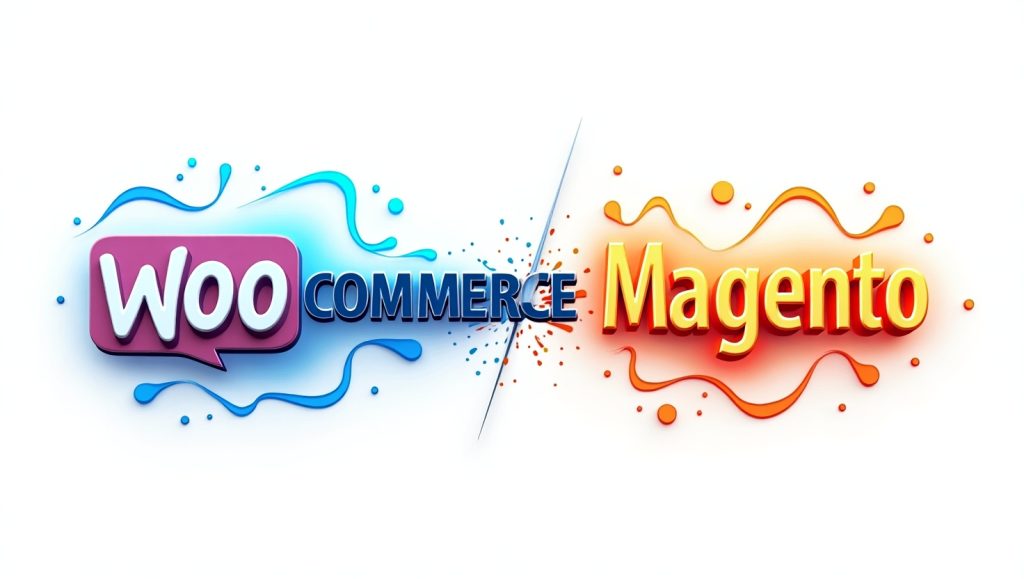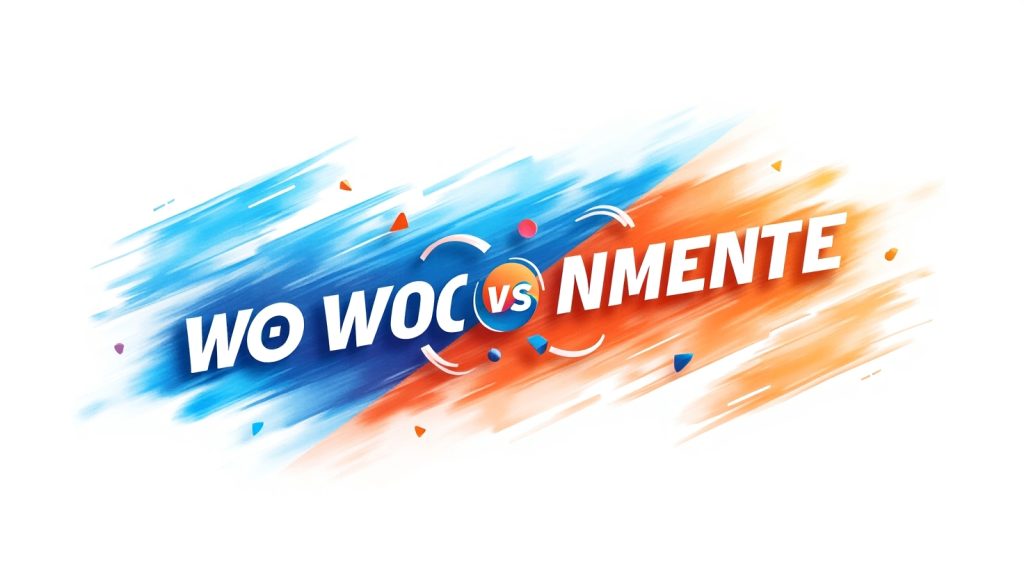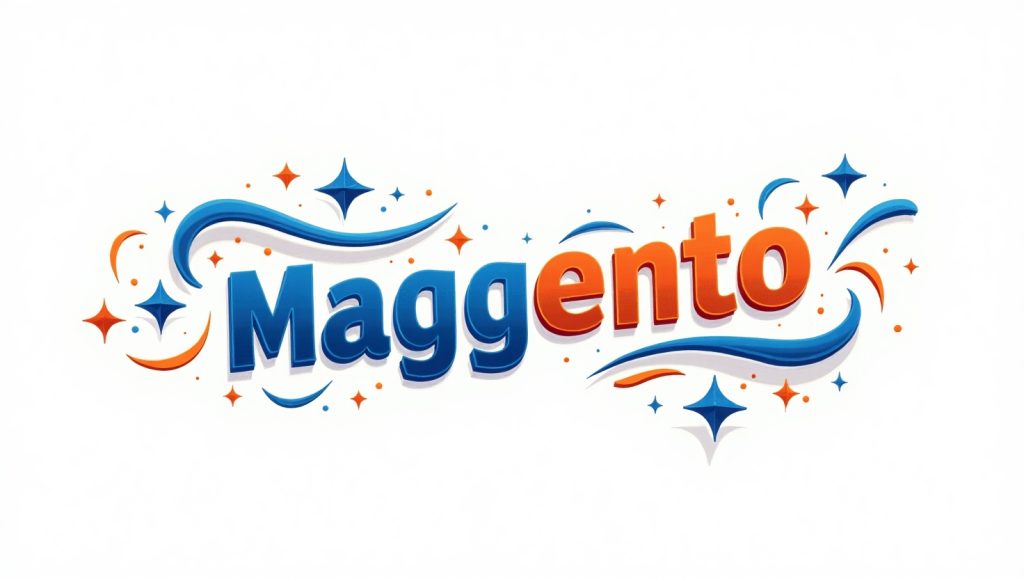Platform Foundations: The Origins of WooCommerce and Magento

The comparison between WooCommerce and Magento is like two schools of thought on how e-commerce should work. Both platforms are open-source, and both have been around for well over a decade. However, nothing influences the way they worked in the past more than these initial differences, especially when concerned with the way they work today and whom they favor. WooCommerce is a WordPress plugin that converts a regular WordPress site into a highly functional e-commerce platform. Being built on WordPress, it has gained millions of users’ familiarity. Thus, WooCommerce excels especially for small and medium businesses intending to start online sales without investing heavily.
One gets the advantages of WordPress along with specialized tools for online selling. It is beginner-friendly, easy-going, and powerful enough for many online retailers. Magento (now Adobe Commerce, but still open-source at its core) was built from scratch as a pure e-commerce solution. It’s heavy-duty, more complex, and often suits larger businesses with serious development backgrounds. Though the flexibility and scalability are incredible, you pay the price for usability with Magento.While both platforms indeed aim to empower businesses to sell online, it is more about the nature of the business and the people behind it that will determine which solution feels more fitting.
WooCommerce: A WordPress Native with E-Commerce Muscle
If you are using WordPress, you’re probably considering WooCommerce. This plugin installs like any other, and within minutes your site will be listing products, taking payments, and processing orders.
And the magic of WooCommerce- it doesn’t try to reinvent the wheel. Instead, it fits in with WordPress’s infrastructure: You don’t need to build your site again or put off the thought of starting a new one altogether; it sort of feels like adding a smart extension to something you already loved.
Customization is easy, with a thousand themes and plugins compatible with WordPress. It doesn’t matter whether you’re selling digital downloads, subscriptions, or physical goods: WooCommerce can do it all. For all the startups and solopreneurs, this is pure gold. It is intuitive, user-friendly, and flows with your WordPress way of life.
Magento: Designed for Enterprise-Grade E-Commerce
E-commerce-wise, Magento, on the other hand, is a heavyweight. Built for big-scale e-commerce, Magento is able to satisfy your complex business requirements such as multi-store management, international shipping, or transactions of high volume.
It must be said, though, that projects based on Magento are not for the faint-hearted. There is a steep learning curve for free sites on Magento. Your installation, themes, setup, and customizations will usually best be left to a developer-or even a team. However, once the learning curve is out of the way, Magento really does become a playground for serious eCommerce architecture.
Simply put, Magento is the best solution in terms of total control. There are unlimited customization options because it is open source, and, of course, Adobe’s support ecosystem provides professional tools if you can afford it. For brands that require a powerful infrastructure along with rich functionality, Magento is definitely a strong competitor.
Customization, Flexibility, and User Experience

Customization is a major factor for which users are much in love with the open-source platforms. WooCommerce and Magento both allow you to shape your store in the way you want-but by using very different ways of fulfilling such a purpose.
For WooCommerce, the heavily uses plug-ins and themes of the WordPress environment. That is, you are not really required to touch any code if you want to. You can change everything from design and functionality using your dashboard.
On the other hand, Magento is a deeper toolbox in technical terms. Because of its modular design, developers can mold features that are highly personalized to their specifications. If you would like a custom checkout flow or rules for dynamic pricing, it’s possible to build it on Magento, but usually requires custom development.
In a nutshell: WooCommerce provides ease and comfort; Magento provides power and precision.
Themes, Plugins, and Simplicity with WooCommerce
WooCommerce wins big points for ease of use. You don’t have to be a developer to create a professional-looking store and put it online fast. Theme marketplaces, including ThemeForest and WordPress.org, have thousands of WooCommerce-compatible themes, many of which are free.
Plugins take it one step further. Need integration with Stripe? Want to add customer reviews or live chat? There’s a plugin for that. Most of the time, it’s just plug-and-play.
With freedom, however, comes responsibility: too many, or poorly written, plugins will slow down your site. But if you follow a few basic rules, nothing will break, and for almost all small and midsized stores, the plugin convention works like a charm.
Magento Extensions and Developer-Friendly Architecture
The customization powers of Magento is quite a different thing. Its architecture is meant for developers. You can build unique workflows, tailor admin panels, and even alter how your database interacts with your product listings.
The Magento Marketplace comprises thousands of addons, but the true magic lies in creating customized modules. Need your store talking to a warehouse system? Or perhaps your checkout process needs to follow a special flow? Magento is there for you.
All this comes under one condition: complexity. You will need a developer-an agency-to get anything done. But then again, such businesses will find flexibility in Magento that WooCommerce sometimes cannot provide.
Performance, Scalability, and Maintenance

Performance is critical for launching or destroying an e-commerce site. Page-load times affect conversion rates, user experience, and even SEO. Both WooCommerce and Magento can be fast, depending on how they are set up.
WooCommerce, straight out of the box, is lightweight. It works wonderfully for stores that carry a smaller inventory. But as traffic and product count increase, performance bottlenecks will set in unless you upgrade your hosting and optimize your site.
Magento, on the other hand, was built to thrive. With great power comes great responsibility: Magento holds gigantic energy-and if hosted and maintained properly. Such architecture is amenable to large product catalogs, thousands of transactions per hour, and a lot of users concurrently.
WooCommerce Performance in Growing Stores
WooCommerce tends to perform well for most small to medium stores, especially when coupled with an excellent hosting service and lightweight themes. Initially, shared hosting may work, but when traffic picks up, a shift to managed WordPress hosting or VPS may be necessary.
Caching, image optimization, and CDNs are just some ways to keep WooCommerce sites running briskly. Speed and stability will benefit from plugins such as WP Rocket or from services like Cloudflare.
The actual headache starts when scaling up aggressively. WooCommerce can grow with you, but you’ll need to pay attention to server resources and keep the plugins to a minimum.
Magento’s Ability to Handle High-Traffic E-Commerce
Magento comes into its own in a high-volume environment; thus, it is the solution for a business anticipating many thousands of products, frequent flash sales, and heavy traffic.
Because of its performance characteristics, Magento supports custom indexing, advanced caching strategies, and robust database configurations. Pair that with the right hosting environment, either Adobe Commerce Cloud or a dedicated server, and Magento is off to the races.
However, with speed comes the requirement for continuous tuning. It is not a matter of set-it-and-forget-it. Thus, the development and maintenance aspects of Magento are perpetually deserving of investment. Nevertheless, these are usually well worth the effort for a really large-scale e-commerce operation.
Conclusion
Here, again, there is no better platform as such between WooCommerce and Magento-it just depends on the specific business needs. Both are open-source, flexible, and can very well deliver successful online stores. They cater to different audiences, though.
It is quite ideal for beginners, especially those already using WordPress or for small-to-medium-sized businesses. WooCommerce is very user-friendly, less expensive, and has a little smoother learning curve. You can leverage the powerful WordPress ecosystem.
Magento is built really for large visions. If your store needs deep customization, international features, or even enterprise-grade performance, Magento can do it.